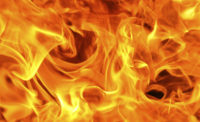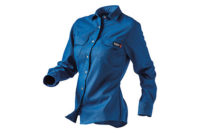 In a January 12, 2012, “letter of interpretation” to former Congressman Jeff Landry of Louisiana, the agency stated:
In a January 12, 2012, “letter of interpretation” to former Congressman Jeff Landry of Louisiana, the agency stated:
“Dear Congressman Landry:
“Thank you for your August 1, 2011, letter on behalf of your constituents regarding Occupational Safety and Health Administration (OSHA) regulations related to Personal Protective Equipment (PPE) for welders, specifically for welding operations in the oil and gas drilling industry that would require wearing flame resistant clothing (FRC).
“OSHA's Enforcement Policy for Flame-Resistant Clothing in Oil and Gas Drilling, Well Servicing, and Production-Related Operations provides general enforcement policy and guidance regarding the specific operations and processes associated with potential flash fire hazards. The clothing selection and hazard assessment criteria referenced in the memorandum are just two of many sources of information employers can use to select PPE that is adequate to protect against the hazards to which their employees are exposed. If an employer's use of engineering and/or administrative controls eliminates employee exposure to flash fire or short-duration thermal exposure hazards (e.g., jet flames, liquid fires, solids fires, and fires associated with oxygen), there would be no requirement for an employer to provide and ensure the use of PPE designed to protect against these hazards.
“OSHA's welding, cutting, and brazing standard, 29 C.F.R. §1910.252(b)(3), outlines specific PPE requirements for welders. This provision states that employees exposed to the hazards created by welding, cutting, or brazing operations must be protected by PPE in accordance with the requirements of the general personal protective equipment standard, §1910.132. The welding standard also states that "[a]ppropriate protective clothing required for any welding will vary with the size, nature and location of the work to be performed." Therefore, if welders are exposed to flash fires or short-duration flame exposures, OSHA expects that employers would provide and ensure the use of FRC to protect workers from these hazards.
“As you stated in your letter, employees wearing FRC may be exposed to hazards relating to heat stress. Therefore, employers should consider the following when selecting PPE for employees that are exposed to these adverse conditions: provide light weight breathable fabrics and allow employees to drink cold liquids, such as water and other electrolyte replenishing drinks.
“Employers should establish work/rest cycles to ensure that employee exposure time to high heat is minimized and work rate is decreased. For additional information on controlling heat illness please refer to the following website: https://www.osha.gov/SLTC/heatillness/index.html.”
OSHA responds to Congressional inquiry about FR clothing for welding

